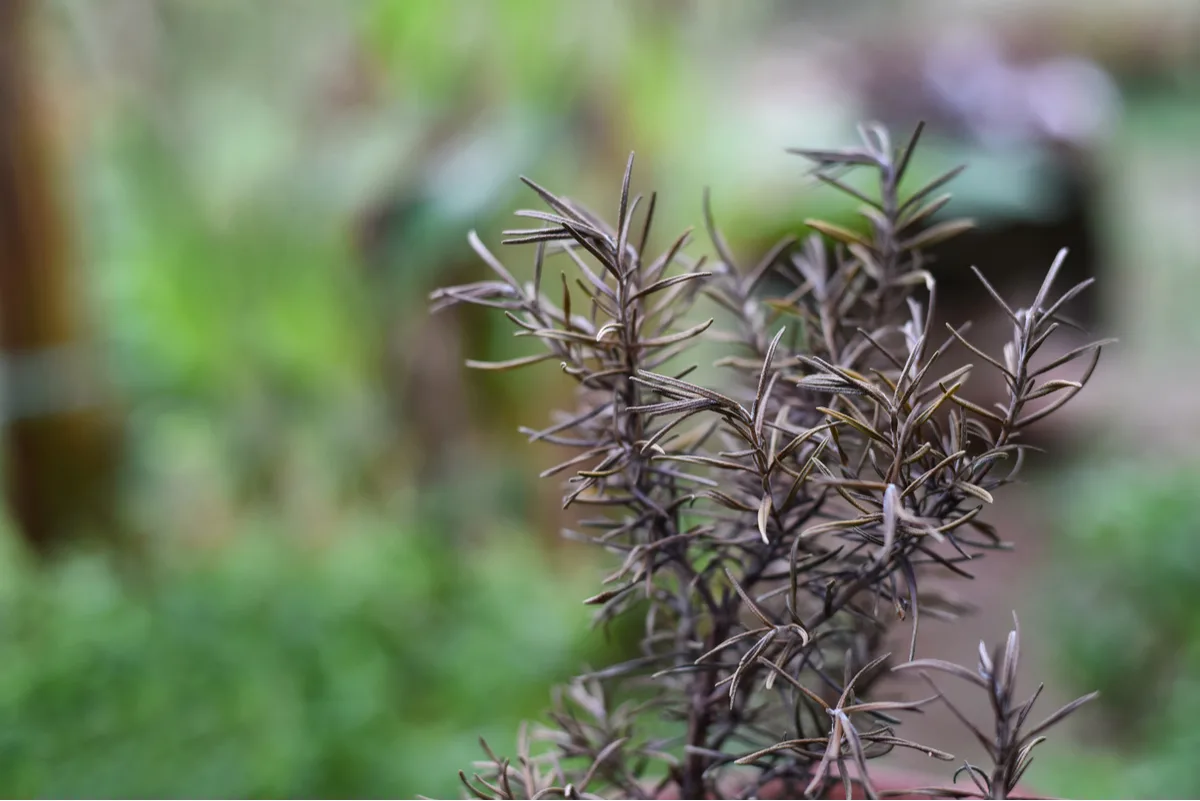
Rosemary is an aromatic perennial herb, beloved for its hardy and tough nature. Previously known as Rosmarinus officinalis, its name was changed to Salvia rosmarinus due to its growth habits relating closely to the Salvia genus.
Native to wild coastal habitats in southern Europe, it is accustomed to dry summers and mild, wet winters. However, as a popular culinary herb, it is grown just about anywhere around the world in full sun with light soil that drains well.
Should your rosemary show signs of stress, identify the cause on this list and apply the relevant fix to get your plant back to good health.
Related Reading: How To Propagate Rosemary
1. Overwatering
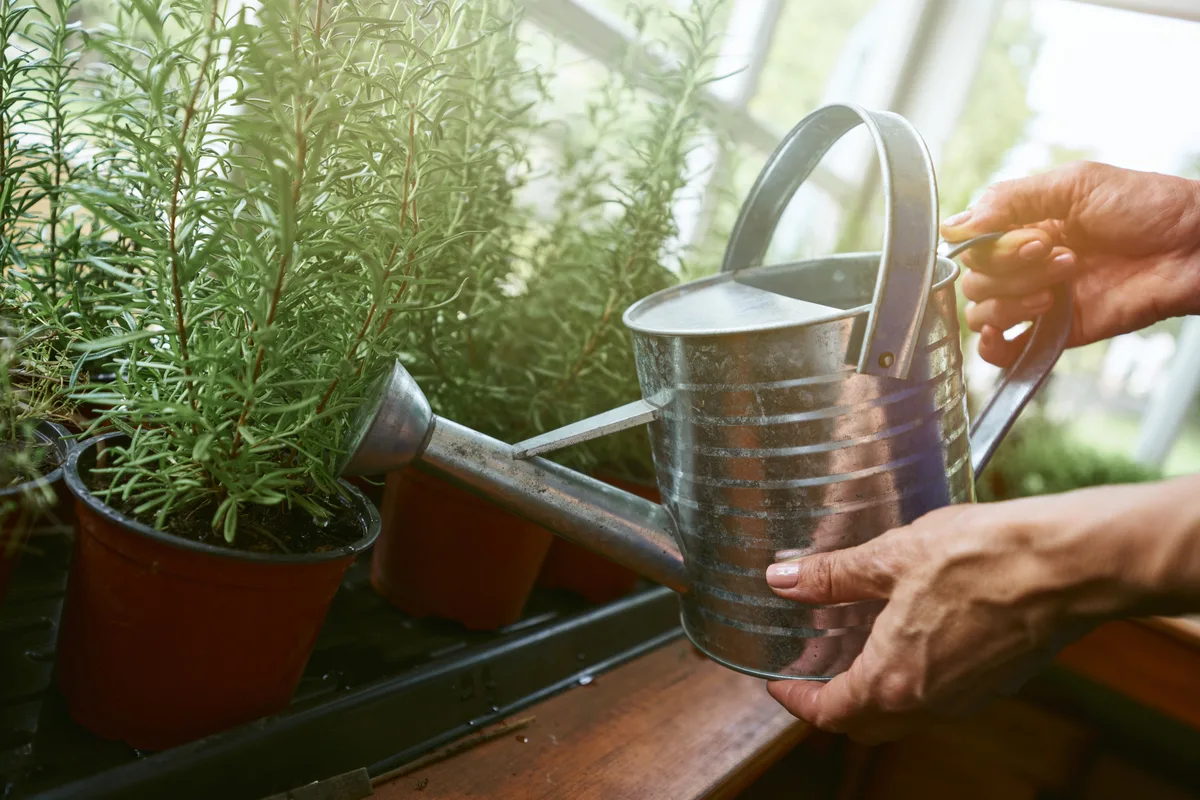
Overwatering rosemary causes the roots to – literally – drown. Look out for browning of the tips of the leaves. This may be something often considered to be caused by lack of water, but in this case, is the opposite problem.
When you see the leaves turning brown, the first thing you usually do is give it more water. But this actually causes the roots to die off, leaving root rot to take hold. As overwatering continues, more and more of the leaves and the branches become brown and then turn black.
Stop watering the plants and let the soil dry out completely before watering again. Make sure there is sufficient drainage for the plants in their current position. They may require moving and a soil change to improve drainage.
For rosemary grown in containers, make sure the soil dries out between waterings and that the water drains away through the drainage holes in the base of the container.
You can test the soil by inserting a wooden dowel into the soil. If it comes out dry, it’s time to water.
2. Underwatering
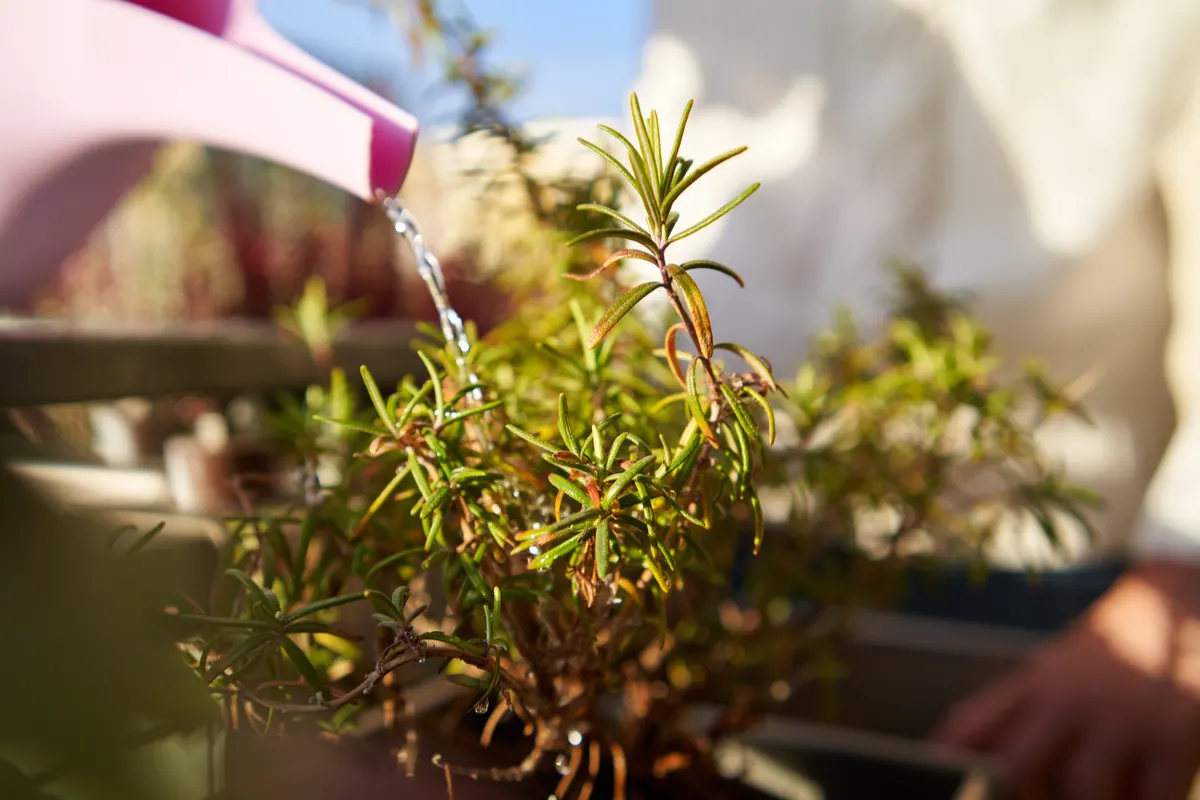
Underwatering rosemary will also turn the leaves brown. But, unlike overwatering, the plants will become twiggy and dry.
The solution is to add water, making sure to give the plant a good soak. Cut off any brown dry areas and feed the roots with a liquid fertilizer made from seaweed to help the plant recover.
Do this every week for two weeks and you should see new growth beginning to appear.
3. Incorrect Soil
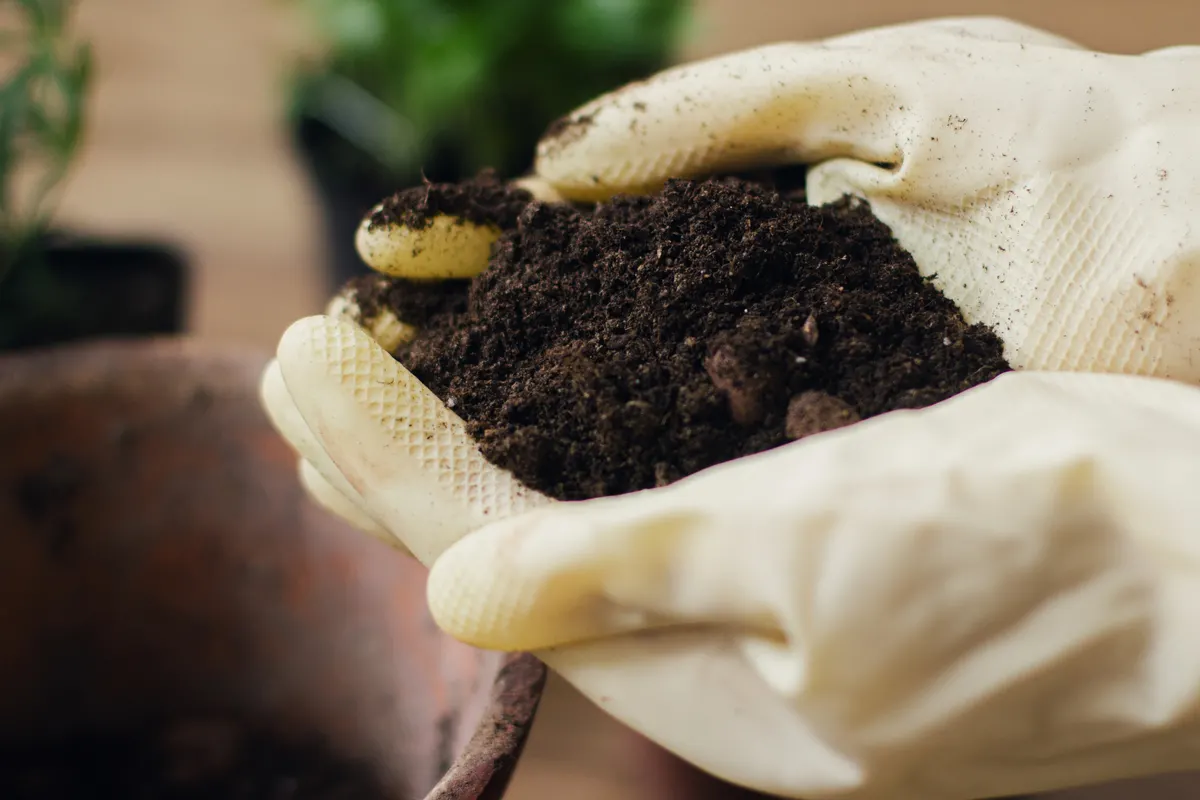
Heavy clay soil is not good for rosemary, causing problems with waterlogging and root rot. It also compacts easily, stopping oxygen from reaching the roots.
In these cases, add plenty of organic matter or coarse sand into the soil before planting to improve drainage. If the plants are already in heavy clay soil, they should be dug up and moved or planted in pots or in raised beds where the soil can be amended easily by adding things like perlite to the potting mix.
Rosemary prefers the rather poor, chalky or stony and sandy soil of its natural habitat, but is tolerant of most soils – except for heavy clay.
4. Incorrect pH

Rosemary prefers slightly acidic to neutral soil with a pH between 6.0 and 7.0. Most garden soils have a pH similar to this. If the pH is too acidic, rosemary will react by turning yellow and dying back.
Acidic soil leaves the roots unable to take up nutrients, causing the plant to stress and yellow. An inexpensive soil test probe will determine the pH of the soil, allowing you to make the right adjustments.
5. Inadequate Light
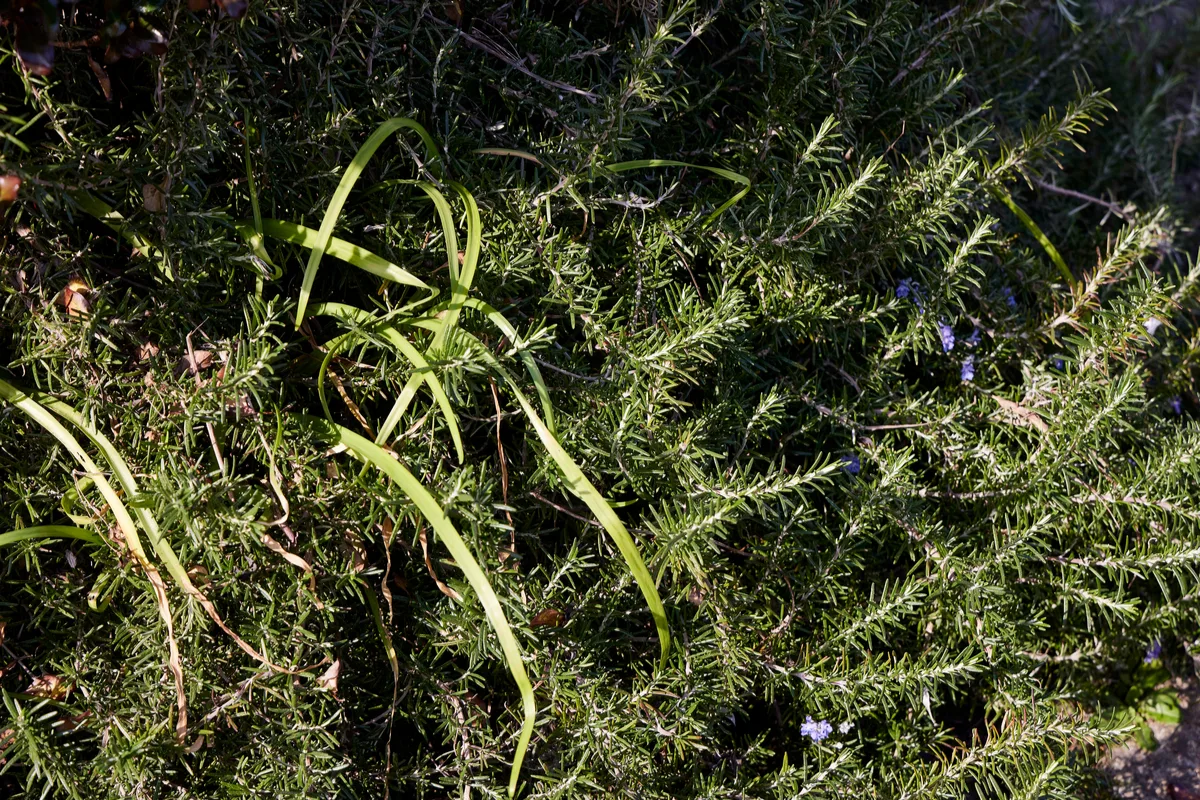
Rosemary needs to be planted in full sun to grow well. Shade will not allow the soil to dry out enough, leaving the problems associated with overwatering to come to the fore.
If the foliage starts to yellow, this could also mean the plant is getting too much shade and needs to be moved.
Rosemary needs at least 6 hours of sunlight per day, but preferably 8 hours a day. Any less will have an effect on the plant’s health.
6. Incorrect Temperatures
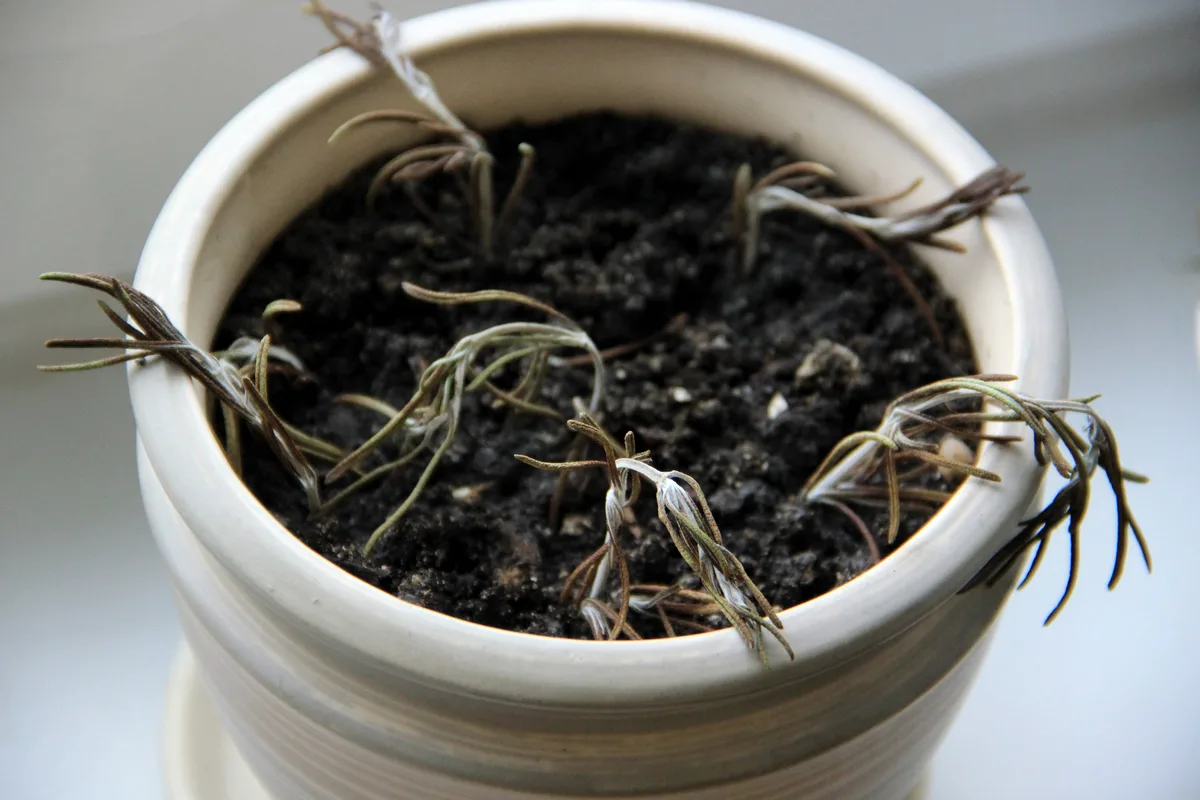
Rosemary likes a bit of warmth and mild winters. They are not frost-hardy and need to be protected from frost in winter. Also, cold wet soil will quickly turn to root rot and cause the plant to die back. Excessively cold temperatures or frost will quickly kill off the plants and they will need to be replaced.
If the temperature drops below 30F in your area, rather grow rosemary in containers on a sheltered patio or bring it indoors during winter. Rosemary prefers temperatures between 55F and 80F.
7. High Humidity

Rosemary grows naturally on hillsides along the coast with lots of wind flow. In these areas, there is a medium amount of humidity. Too much humidity around rosemary slows down evaporation and may result in fungal diseases and root rot taking hold.
Make sure there is enough air circulation around the plants and prune if necessary. Humidity levels should be around 45% – 55% for the best growth possible.
8. Root Rot
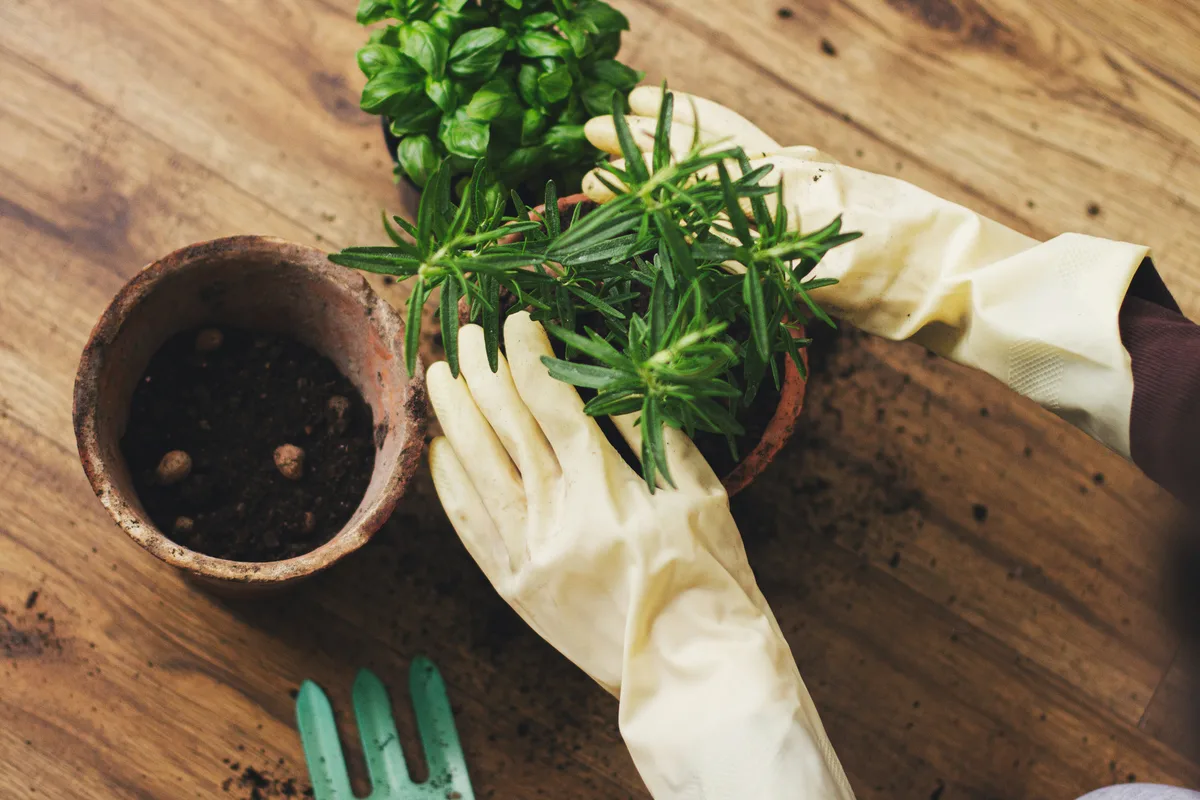
Root rot occurs when there is too much water around the roots of the plant. A fungus – or more specifically, a parasitic water mold called pythium – attaches to the roots, causing them to rot.
Change your watering schedule immediately if you see sections of the plant browning, drooping or wilting. In severe cases, it’s better to pull up and discard the plant before it can infect other plants in the area.
If it’s caught early enough, the damaged roots can be cut off while still leaving enough healthy growth to drive the plant. Repot into a fresh soil mix with plenty of drainage to save it. You can also treat the plant with an appropriate commercial fungicide to remove all traces of the problem around the roots.
9. Pests
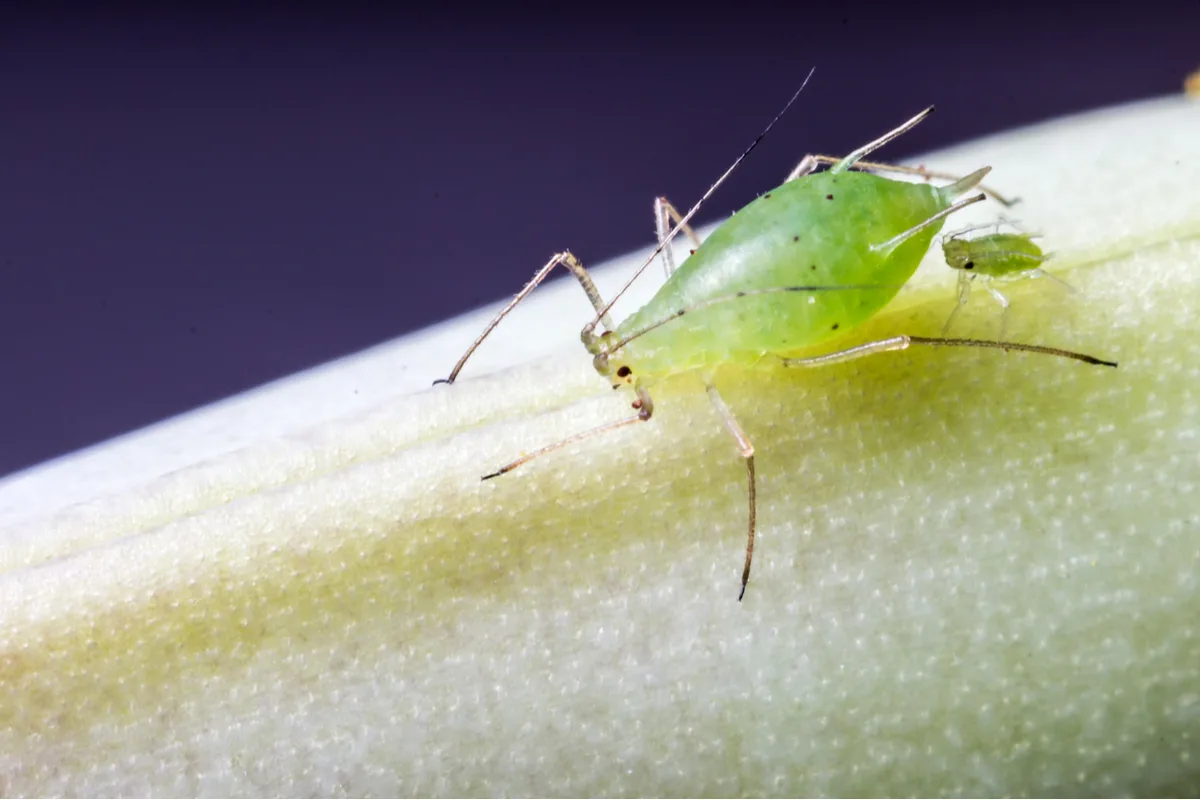
Although not common, rosemary can attract pests like aphids, spider mites, whitefly and spittlebugs if stressed. If the foliage becomes dry and falls off stems, these sucking pests need to be controlled quickly.
Aphids are one of the most common and easily identifiable pests, usually attacking new growth. They are mostly immobile and easy to see. They suck the sap from plants, causing them to wilt.
Spider mites are small, identified by the dust and webs they leave behind. They also suck the sap from the leaves and stems, leaving the plant unhealthy and diminished.
Whiteflies look like tiny moths, making them quite easy to identify. They can fly off the plant while being treated, so it’s important to keep an eye out for further infestations.
Spittlebugs are known for the frothy substance they leave behind after sucking the leaves of your rosemary. They are small and related to aphids, but easily identified by the froth.
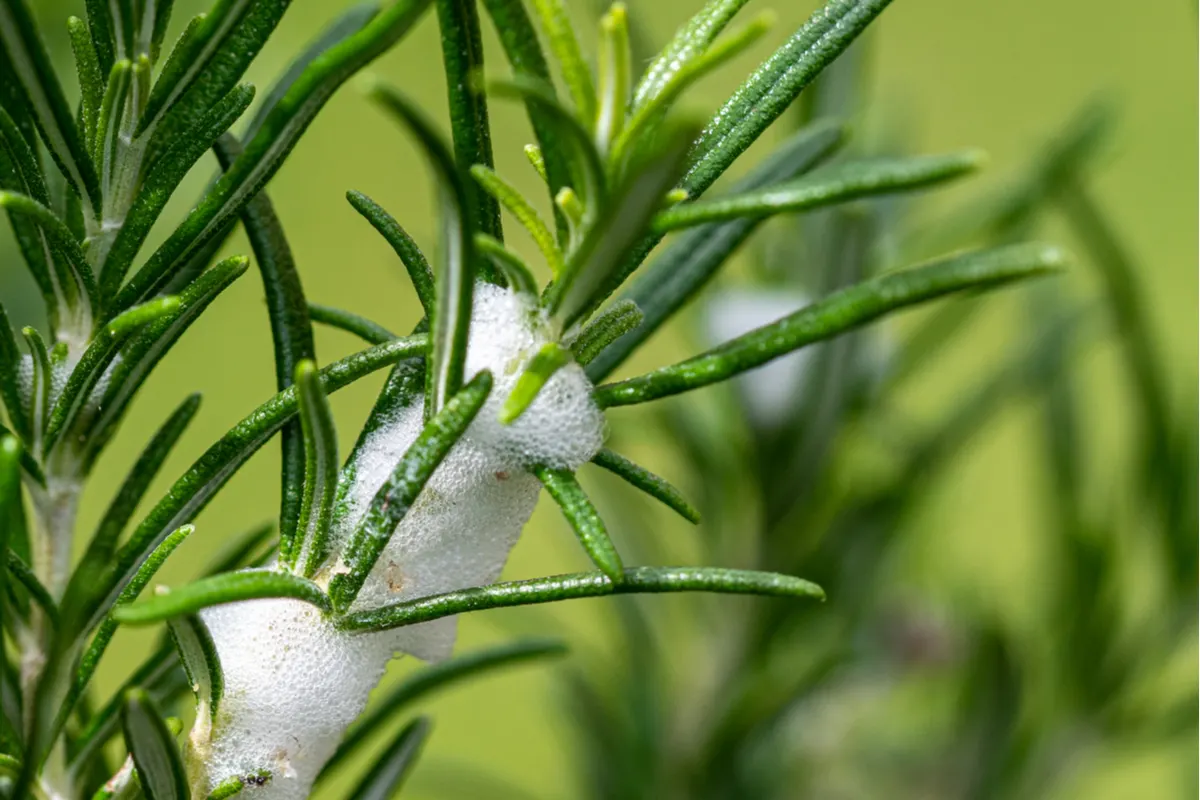
Minor infections can be controlled by washing the pests off the plant. Alternatively, treat with neem oil or an insecticidal soap and keep an eye on the plants to see if an infestation re-emerges.
10. Powdery Mildew
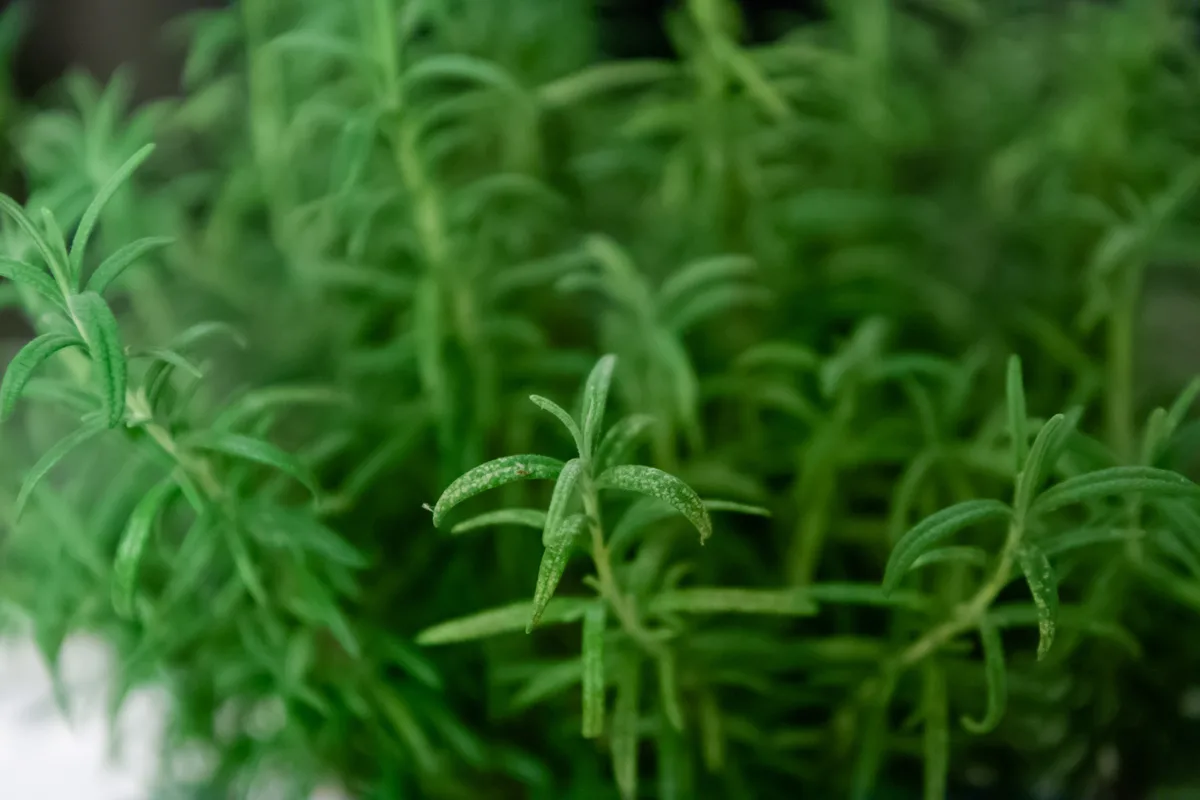
Powdery mildew is a species of fungi. It can be identified on plants as powdery white or grey growth covering the leaves, stems, and fruits or flowers of a range of plants.
Rosemary plants that have poor air circulation, too much shade, too much water and incorrect temperatures may suffer from infestations of these spores. Although it won’t kill a plant, powdery mildew causes curling or yellowing leaves, dropping leaves and malformed flowers.
Check the underside of leaves for the first signs of white powder and remove any infected parts. Make sure the plant is positioned with enough sunlight to improve evaporation. Prune to improve air circulation and water at ground level rather than watering the leaves.
You can use a commercial fungicide to treat the plants, but make sure to follow up as it may take quite a few applications before the problem is eradicated.
11. Lack of Pruning
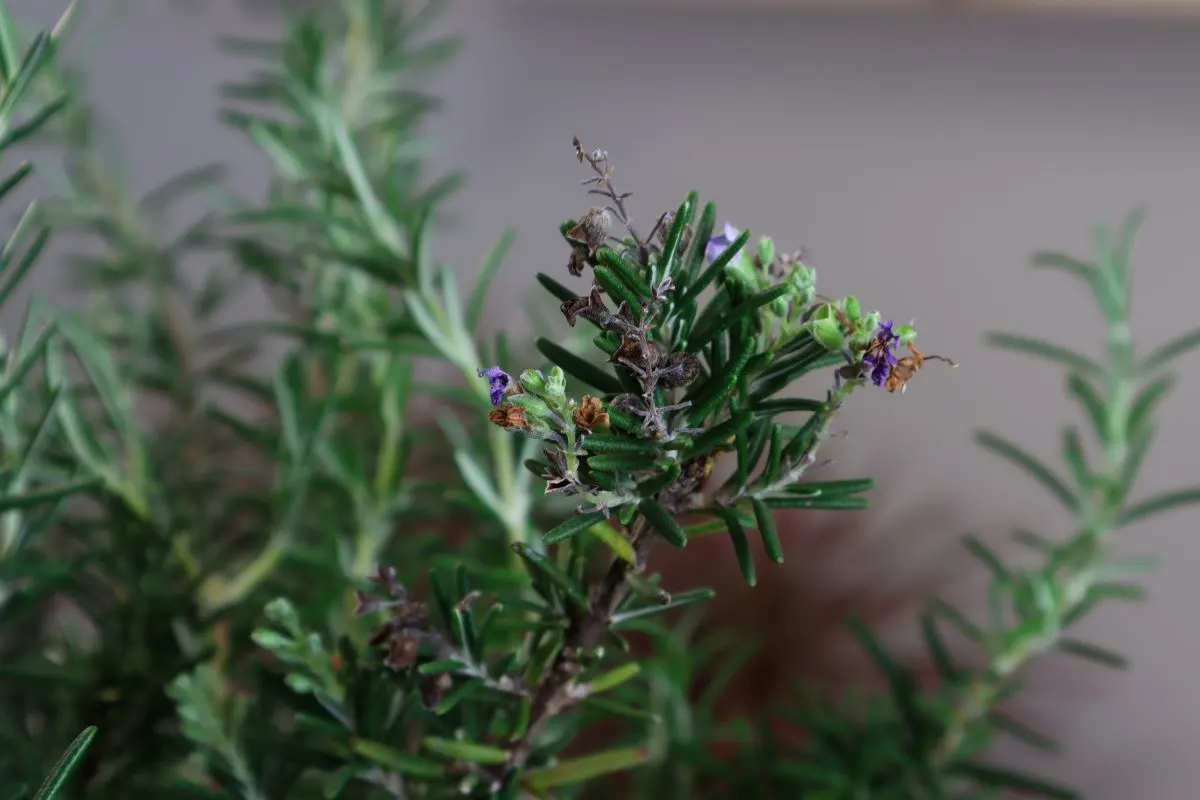
Generally, rosemary can survive without regular pruning. However, it may become necessary to prune out branches to improve air circulation to stop pests and fungal diseases from attacking the plants.
They respond well to cutting and harvesting for the kitchen and they can even be shaped and pruned into a hedge.
12. Overpruning
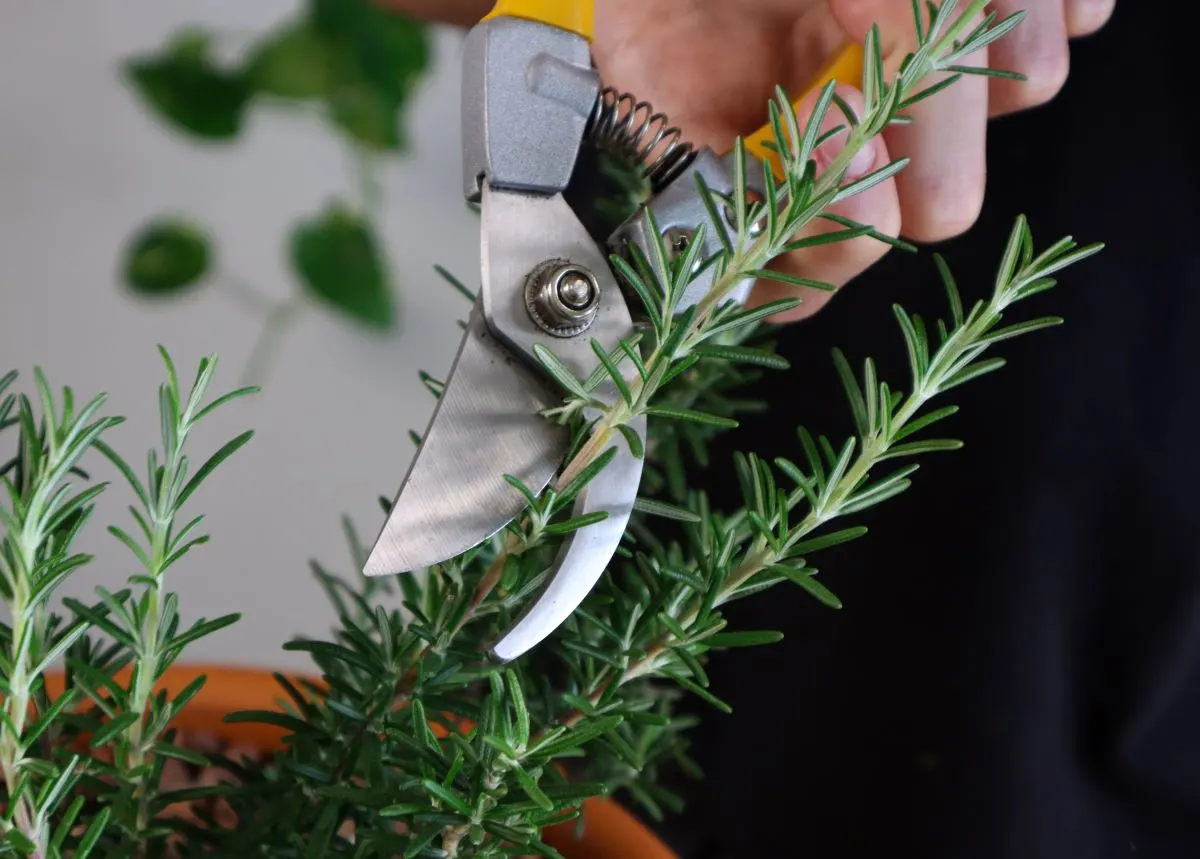
Apart from the usual harvesting and keeping the plants airy, no pruning should occur 6-8 weeks before the average frost date in an area. Pruning at the wrong time of the year, or pruning too much, will damage the plants to the point where they may not recover.
When pruning in late winter or early spring, the plant can be pruned back a third of its size. But, like all woody plants, you must leave some foliage on the stems and never prune back beyond on the older woody stems. Old wood will not grow new stems.
A surefire way to kill a plant off quickly is to prune back to bare stems. Fertilize soon after pruning to support the new growth.
Here’s our total guide to pruning rosemary for big, bushy plants.
13. Nutrient Imbalance
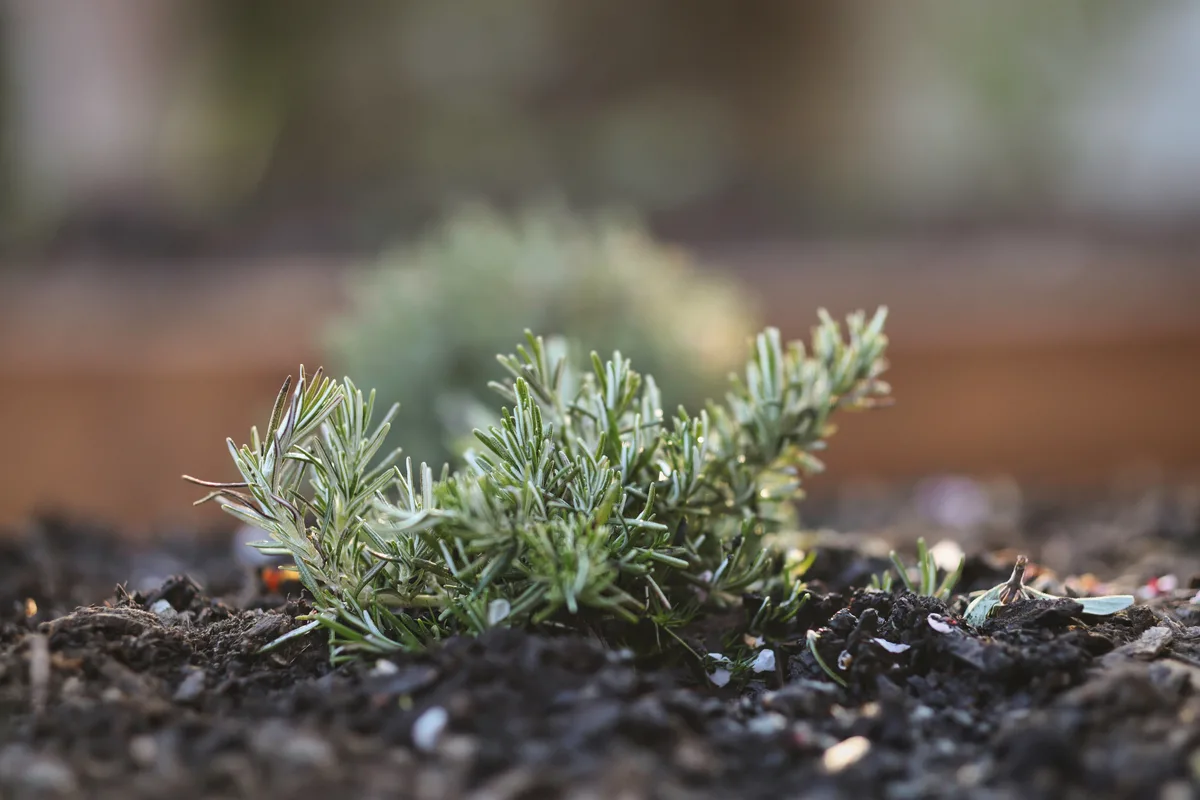
Although not common, if the plant is lacking in nitrogen, the leaves may turn yellow. Luckily, the solution is simple – feed with a fertilizer high in nitrogen. Treat immediately with a liquid fertilizer and or a handful of slow release pelletized high-nitrogen fertilizer around the base of the plants.
If the leaves start drooping and grow vigorously, you may have a problem with too much nitrogen. The excess growth will be more susceptible to pests and diseases. Flush the soil and stop feeding for a while to resolve the problem.
14. Incorrect Fertilizing
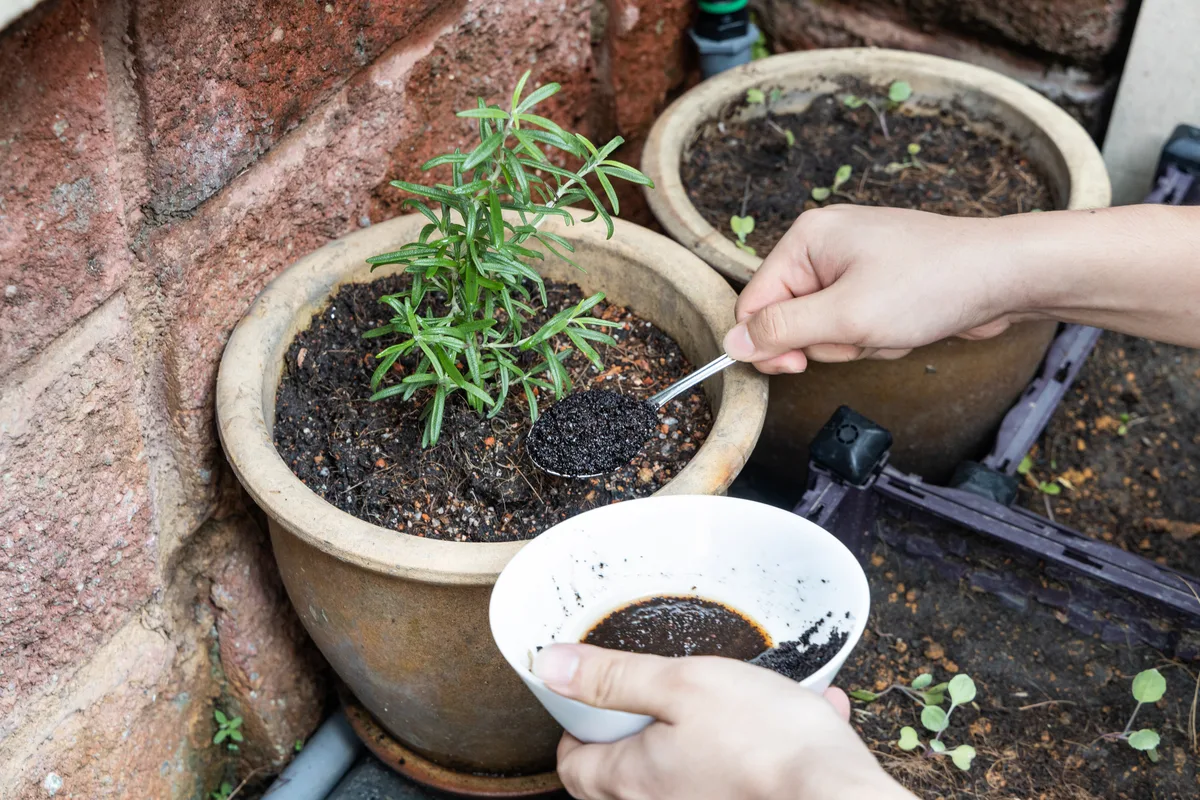
Although rosemary is grown in an area with sandy chalky soil, they generally do well with a bit of extra feeding.
Feed with a general fertilizer during the growing season and don’t feed in winter.
Underfertilizing will be evident in yellow pale leaves, while overfertilizing can be seen in stunted growth and discoloring of the leaves. Rather reduce the feeding to once a year in these cases and always follow the instructions on the packaging.
15. Overcrowding
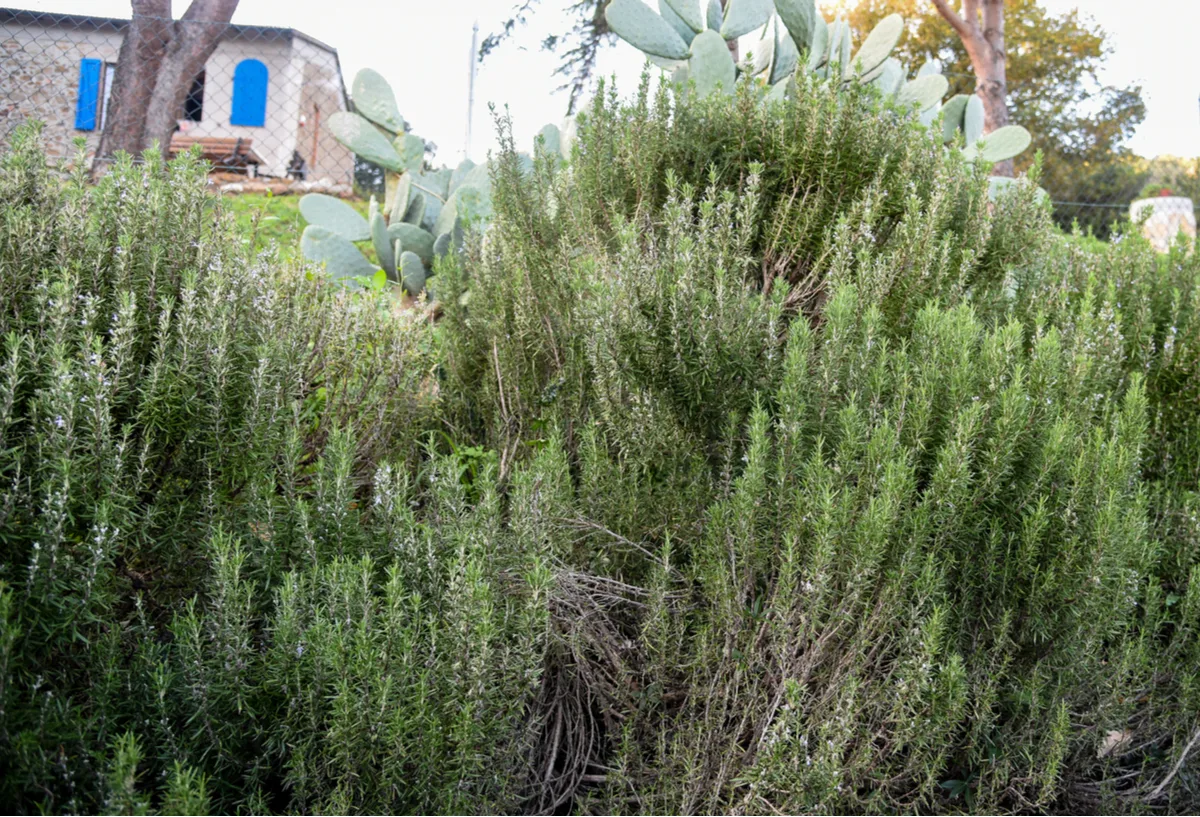
Rosemary doesn’t like to be overcrowded. Plants that are too close together fight for root space, causing their roots to become tangled and compete for nutrients and water. This will limit the growth and health of both plants.
Remove plants that are too close and plant elsewhere in your garden or move into containers. Prune to make sure there is good air circulation to avoid attracting any pests and diseases.
If you are growing a hedge, space the plans 18-24 inches apart and make sure they are regularly pruned to keep the foliage in check and improve air flow between the branches.
Related Reading: 10 Rosemary Companion Plants (& 5 That Should Be Nowhere Near)
16. Lack of Pot Space
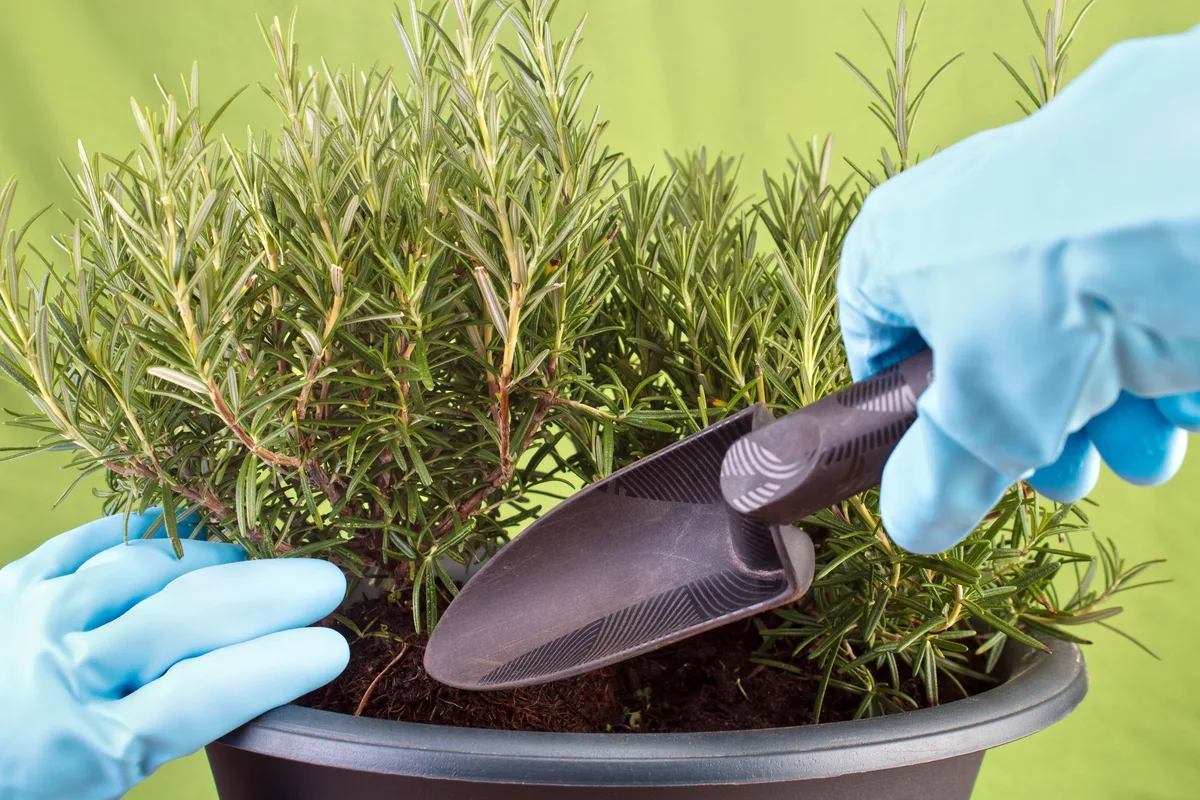
Pot-bound rosemary will be lackluster and have poor growth. The lower leaves can also turn yellow.
You can test this by slowly wriggling the plant free of the pot to check the roots. If the roots are crowded around the edge of the pot, it needs to be repotted into a bigger pot with fresh potting soil.
Remember to tease the roots gently from the bottom to stop them from growing in circles.
With the right care and an awareness of potential problems, you can keep your rosemary in good health year-round. Check often for signs of struggle to fix the issue before it ends up killing your plants.
